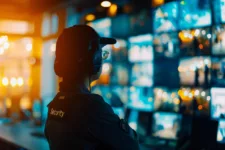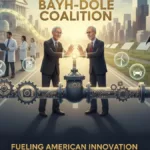Close protection officers play a big part in maintaining the safety of high-profile individuals. These professionals operate quietly, working behind the scenes to create and maintain a secure environment around clients who face unique, high-stakes risks.
Security Risks Unique to High-Net-Worth Individuals
Public visibility brings exposure to targeted threats. High net worth individuals are vulnerable to stalkers, opportunistic criminals, and information leaks. Some threats stem from corporate rivalries or political motives.
In this environment, those who need close protection rely on experts trained to predict and prevent danger before it escalates. These professionals do more than react. They act before anything unfolds, identifying blind spots and reshaping movements to reduce exposure without restricting the individual’s freedom.
Close Protection Officers: Risk Assessment and Adaptive Protection Strategies
Each detail matters when shaping a safety plan. Close protection bodyguards begin their assignments by examining risk (think current threats, past incidents, lifestyle habits, and exposure points). Plans are then designed to minimize vulnerabilities.
Unlike static security methods, this protection evolves with the client’s schedule and public presence. These officers possess skills in surveillance detection, defensive driving, and protective intelligence. Their training gives them the tools, but their sharp instincts make the difference.
From Public Events to Private Retreats
Clients move between luxury residences, business centers, international airports, and high-profile gatherings. Every setting introduces fresh risk. Close protection officers don’t follow; they lead. They assess new environments, prepare secure paths, and evaluate every point of contact.
At events, they coordinate with venue staff and law enforcement. During travel, they prepare vehicles, inspect accommodations, and check itineraries. The process is detailed, structured, and precise.
Discreet by Design
The job depends on staying low-profile. Unlike an armed security officer at a checkpoint, close protection is fluid and adaptable. Clients often prefer discretion. Visibility can increase tension or attract attention.
These officers stay close without drawing the spotlight. Their quiet presence offers assurance, not intrusion. Their ability to blend in, move fluidly, and remain alert at all times makes them an asset in public and private settings alike.
Operational Control Without Interruption
Protection involves managing time, space, and people. These officers screen every interaction as in who enters the client’s space, how staff interact, which meetings require secure oversight.
They oversee transportation logistics and communicate with service providers while monitoring surroundings for potential threats. The goal is control without interruption. The officer acts as a filter, allowing only trusted individuals and pre-cleared information through.
The Complexity of Travel Protection
Travel expands both opportunity and risk. International assignments can introduce unstable regions, language barriers, or new legal frameworks. Close protection professionals handle customs protocols, coordinate with foreign contacts, and maintain secure travel paths.
They plan for delays, alternative routes, and shifting political climates. By preparing for the worst, they make ordinary movement possible, even under extraordinary conditions.
A Rising Need in a Changing World
As wealth becomes more visible, so does the risk that comes with it. Public records, online exposure, and news coverage make it easy for malicious actors to identify targets.
More individuals now realize they need close protection, especially during high-profile transactions, corporate transitions, or family disputes. The rise in personal security demand reflects the increasing pressure public figures face in both digital and physical spaces.
Team-Based Protection Models
In many cases, safety requires a team approach. When protecting a family, a business leader, or someone managing multiple properties, one officer cannot cover all needs. A team might include a driver, advance agent, residential specialist, and logistical coordinator.
Each person handles a separate aspect. This model creates full coverage. The lead officer monitors overall risk, while others handle minute-to-minute logistics or crowd control.
Private Residences and Domestic Risk Management
Risks don’t disappear behind a gate. Residences, though familiar, introduce their own safety challenges.
Households include vendors, staff, guests, and service teams. All present potential risks. A close protection bodyguard helps manage these variables. Entry logs, verified backgrounds, and secure perimeters are part of the strategy. The officer monitors arrivals, evaluates movements, and maintains order quietly in the background.
Digital Overlap and Modern Threat Vectors
Many threats now begin online. Surveillance doesn’t just happen in person; it happens through data leaks and location tracking. Protection professionals now work in tandem with cybersecurity teams.
The officer guards the client physically, while digital experts monitor for mentions, threats, or leaked schedules. This fusion blocks risks before they converge. Knowing the ins and outs of close protection includes awareness of how real-world and online threats connect and how to disrupt them.
Customized Services for Different Lifestyles
A political leader, celebrity, and business mogul face different risks. Some need escorting through crowds. Others require confidential protection during negotiations.
No two clients need the same service. The work adapts to each lifestyle. Some prefer visible presence, others complete privacy. Some need 24/7 protection, while others need specialized coverage for events or travel. Officers adjust their method to match the individual, not the other way around.
Long-Term Assignments and Trust Development
Protection relationships often grow over time. With continued assignments, trust deepens. Officers witness family dynamics, financial decisions, and vulnerable moments. Discretion becomes just as important as tactical readiness.
In long-term work, professionalism builds the foundation for trust. Clients often come to depend on these officers for more than just security. They depend on them for discretion, loyalty, and insight.
Close Protection vs. General Security
There’s a distinct difference between general security and close protection officers. Security guards protect property. They manage gates, monitor feeds, and deter theft.
Close protection, by contrast, focuses on people. These professionals operate in motion, adapting to threats that shift minute by minute. Their value lies not in equipment, but in thinking: strategic awareness, interpersonal awareness, and staying calm under pressure.
Executive Protection in the Corporate World
Today’s executives are symbols of corporate identity. With public announcements, earnings releases, and deal signings come increased visibility. Protection in this space includes boardrooms, airports, hotel suites, and conference venues.
The officer may sit outside a meeting room one hour and ride along in a motorcade the next. Their assignment straddles the public and private, requiring both polish and vigilance. This hybrid approach serves those whose influence stretches across continents and sectors.
Private Aviation and Controlled Transit
Private aviation removes some public risk but introduces new variables. Smaller airports often have reduced oversight. Crews, passengers, and service staff must all be vetted.
The armed security officer may manage the entry point, but it is the close protection specialist who coordinates transitions. They check flight crews, verify cargo, and make sure transportation meets the client immediately upon landing. There’s no margin for error when every moment outside controlled space carries potential risk.
Precision, Not Presence
The work of close protection officers lies in preparation, strategy, and calm control. It isn’t showy or loud. It’s quiet, calculated, and unshakable.
For high-net-worth individuals, this kind of focused personal security is not about limiting movement. It’s about enabling freedom, grounded in confidence. In a world of fast-moving threats and unpredictable exposure, those who need protection don’t wait. They hire the professionals who know how to act before a threat arrives.
Written by Lara Harper








